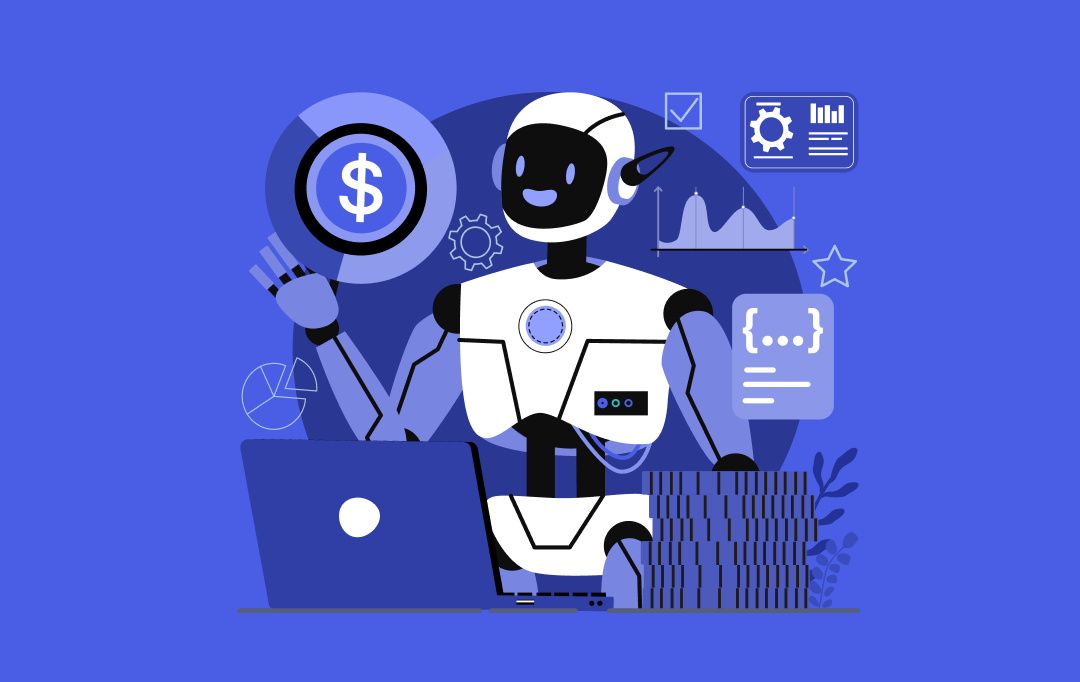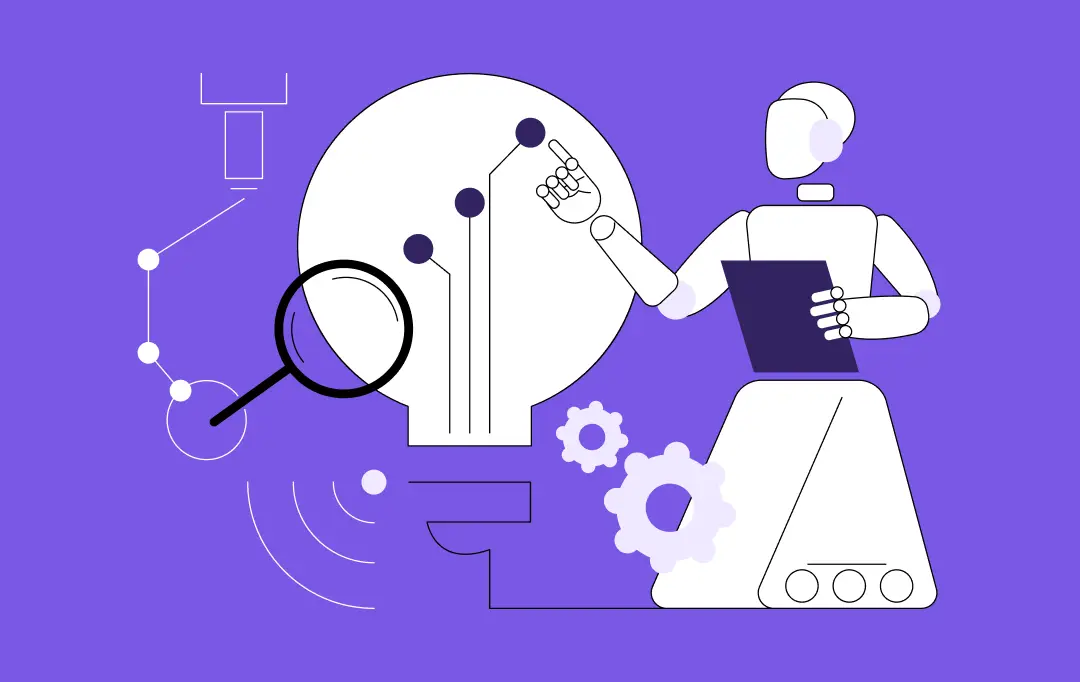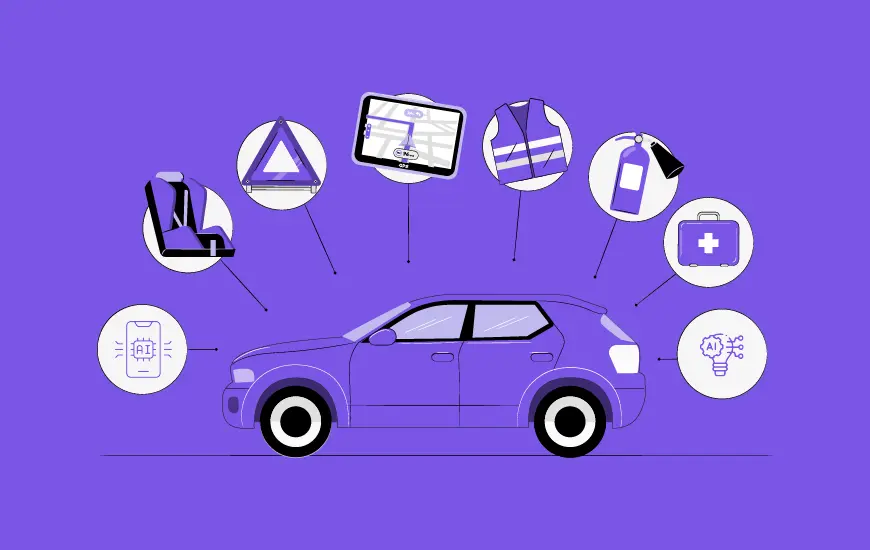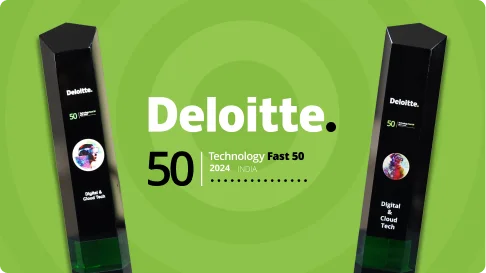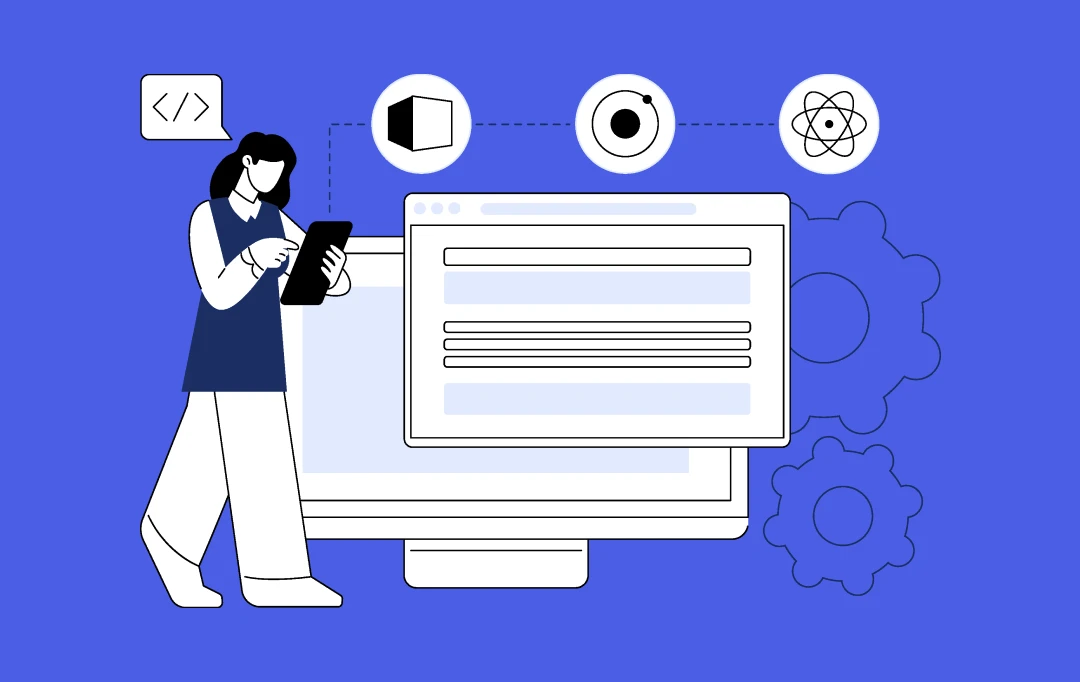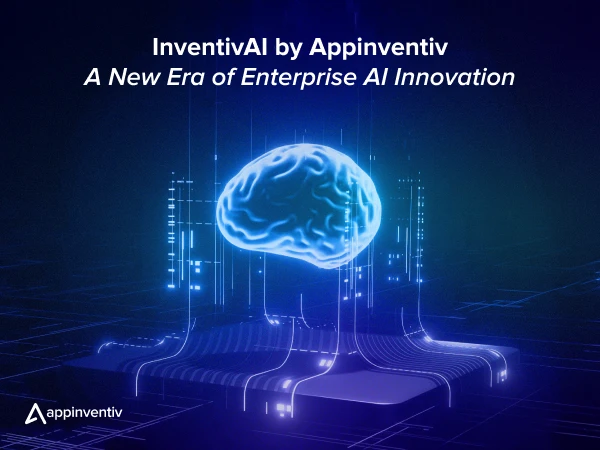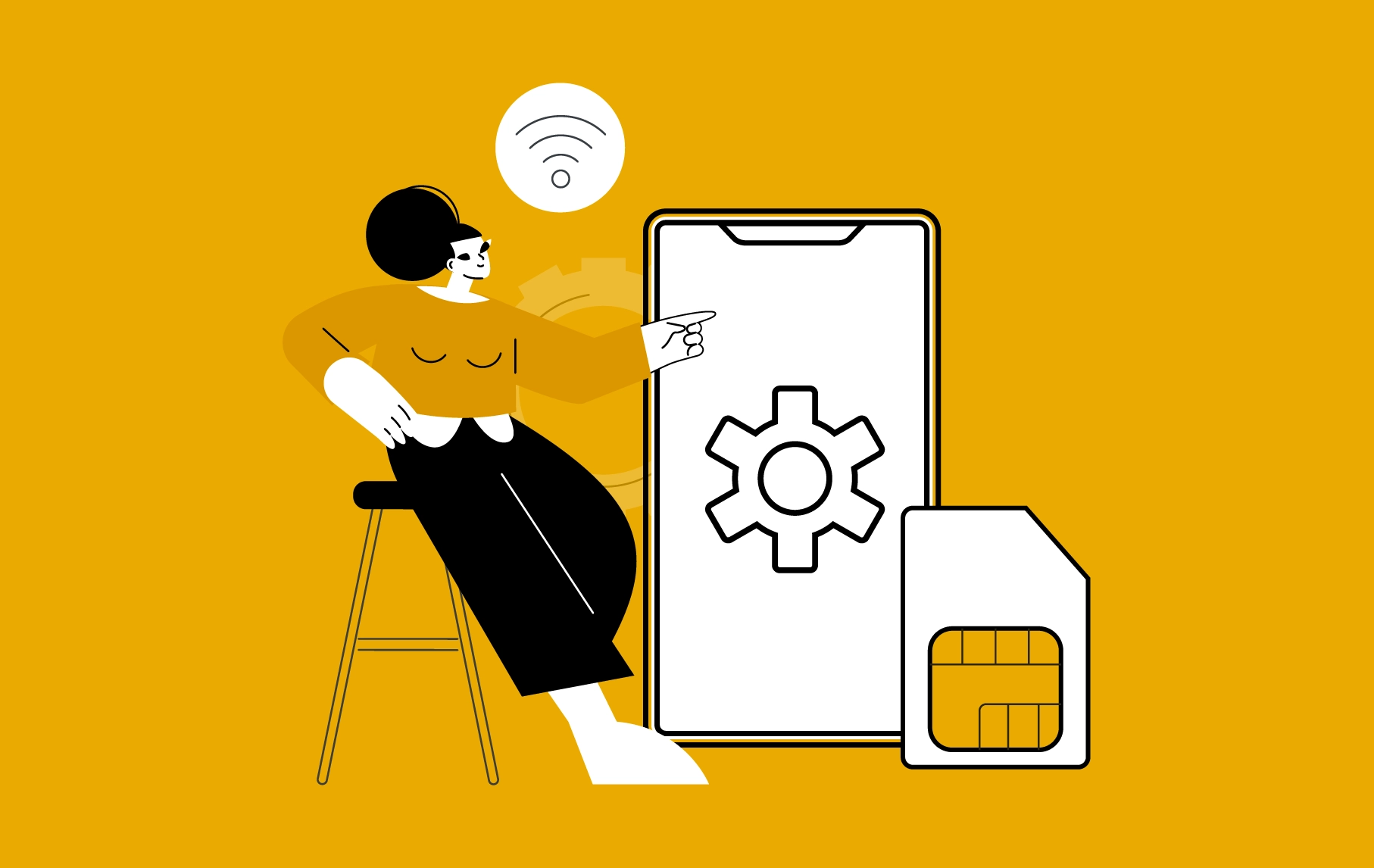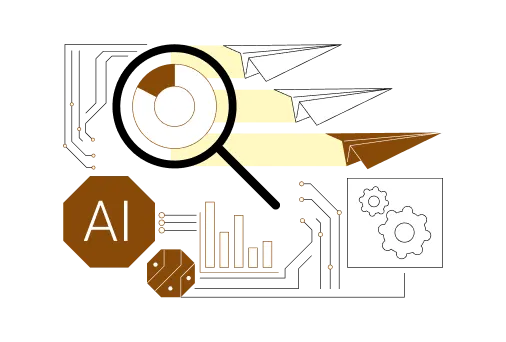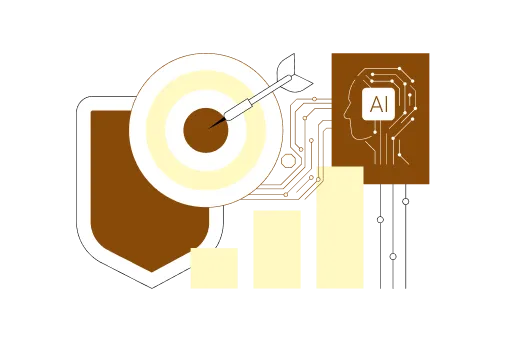- What is AI Visual Search and How It Works Behind the Scenes
- Why Visual Search Matters: Benefits of AI Visual Search for Retailers:
- Higher Engagement Rates
- Lower Bounce Rates
- Reduced Return Rates
- Improved Cart Conversion Rates
- More Than Just Search: Key Use Cases of AI Visual Search in Retail & Fashion
- Visual Product Discovery
- Personalized Recommendations
- Virtual Try-Ons
- Inventory Optimization
- Trend Analysis
- Data-Driven Insights
- How Do You Actually Do This? A Step-by-Step Implementation Plan
- Define Your "Why" and Audit Your Data
- Analyze the Data
- Make The "Buy vs. Build" Decision
- Deep Integration (The "Plumbing")
- Nail the User Experience (The "Magic")
- Train, Launch, Iterate, Repeat
- Challenges in Implementing AI Powered Visual Search & How to Address Them
- Training AI with Diverse and Accurate Data
- User Adoption and Engagement
- Managing Expectations
- Data Privacy and Security Concerns
- The Cost of AI Visual Search Development for Retail and Fashion Industries
- Examples of Retail Giants Using AI Visual Search & Real World Results
- Appinventiv’s Expertise: How We've Put This into Practice
- The Future of AI Visual Search is Multimodal: Trends and Predictions
- Integration with Generative AI
- Voice + Visual Synergy
- Hyper-Personalization with AI Visual Search
- Visual Search in Augmented Reality (AR) and In-Store Applications
- The Retail Revolution is Visual, Ace it with Appinventiv
- FAQs
- AI Visual Search bridges the gap between offline inspiration and online shopping.
- Businesses that adopt AI visual search early see higher conversion rates and increased customer engagement.
- The benefits of AI visual search include faster product discovery, improved conversions, reduced returns, etc.
- The cost of implementing AI visual search in retail and fashion ranges between $40,000 and $400,000 or more based on your business needs
- Appinventiv has delivered over 300 AI-powered solutions helping retailers integrate AI visual search and drive real business growth.
We’ve all been there. You’re scrolling through your feed, or even just walking down the street, and you see it: the perfect jacket, a stunning pair of shoes, or that one mid-century modern chair that would complete your living room.
What happens next?
You pull out your phone. Quickly take a photo with your phone, upload it to an app, or hop on to an AI visual search app like Google Lens, and instantly see a list of matching products available for purchase.
In just a few seconds, the outfit that once seemed out of reach is now just a click away. This is the magic of AI visual search in retail and fashion industries. AI in retail and eCommerce is a powerful technology that’s revolutionizing how we search and shop, bridging the gap between offline and online worlds.
This shift from traditional keyword-based search to image-driven discovery is indeed one of the most significant transformations in how consumers interact with retail and fashion brands.
For product heads and innovation leads in retail and fashion, this AI search point is your single most solvable conversion gainer.
AI visual search in fashion and retail is not a futuristic “nice-to-have” anymore. It’s the core technology that’s turning your customer’s real-world inspiration into an immediate, shoppable moment.
So, what does this mean for you? It means that AI-powered visual search is no longer just about product discovery. It’s about personalization, inventory intelligence, and, ultimately, a massive competitive advantage.
Businesses that get on board first stand to win big. Research has long shown that early adopters who integrate visual search witness a significant jump in their digital commerce revenue.
Interested in leveraging the benefits of AI-powered visual search for your retail industry? Then this blog is for you. In this blog, we’re going to break down exactly what this tech is, why it’s so critical for fashion and retail right now, and how you can actually implement it. We’ll move past the buzzwords and get into the practical strategy.
See the impact AI visual search can have on your sales and engagement
What is AI Visual Search and How It Works Behind the Scenes
Instead of typing words into a search bar, AI visual search allows users to upload an image, and the system uses that image to find similar products. Think of it as a “reverse search” that takes a picture and transforms it into a shopping experience.
But how does it work behind the scenes? Well, visual search in retail and fashion sectors is powered by several key technologies:
Key AI Technologies Behind Visual Search:
Computer Vision (CV): This is the AI’s “eyes.” It’s the science of teaching computers to “see” and interpret the visual world. The first thing CV does in retail is object detection; it finds the shoe in the photo, ignoring the background, the leg, or the floor.
Deep Learning (especially CNNs): This is the “brain.” A Convolutional Neural Network (CNN) is a type of deep learning model that’s brilliant at analyzing images. It doesn’t just “see” the shoe; it deconstructs it into its core attributes or feature vectors. It identifies:
- The “What”: This is a shoe. Specifically, a boot. More specifically, an ankle boot.
- The “How”: What’s it like? The color is tan. The texture looks like suede. The heel is a block heel. The style is Chelsea.
Image Recognition: This is the part that matches those extracted features against your entire product catalog. It sifts through thousands of SKUs in milliseconds to find the products with the most similar feature vectors.
Natural Language Processing (NLP): This is the unsung hero. Your product catalog isn’t just images; it’s text. You have names (“The Suede Chelsea Boot”) and descriptions (“A timeless ankle boot…”). NLP is the bridge that maps the AI’s visual understanding (“suede,” “block heel”) to your product’s textual metadata. This ensures that the results are not just visually similar but contextually correct.

When these technologies work together, the user experience reaches the next level. A user snaps a photo of a boot. The AI identifies its 10-15 key style attributes. It then searches your inventory not for “boot,” but for those specific attributes, returning your in-stock Suede Chelsea Boot as the top result. That’s the power of artificial intelligence visual search.
Why Visual Search Matters: Benefits of AI Visual Search for Retailers:
If you are in the retail or fashion sectors, you would be well aware that new technologies are entering rapidly, changing the entire landscape. But with so many options available, how do you choose the one that will truly make an impact? The answer is AI visual search in fashion and retail.
Why does this technology matter? Because it directly addresses a fundamental shift in how your customers shop.
We’ve moved from a “search” economy to a “discovery” economy. Your customers, especially in the key US and UK markets, aren’t sitting down and searching for “women’s formal wear.” They’re on Instagram, Pinterest, or TikTok, discovering a look they love. They are visual-first.
Text-based search forces them to translate that visual inspiration back into words. It’s an unnatural and frustrating step. Visual search in fashion removes this step entirely.
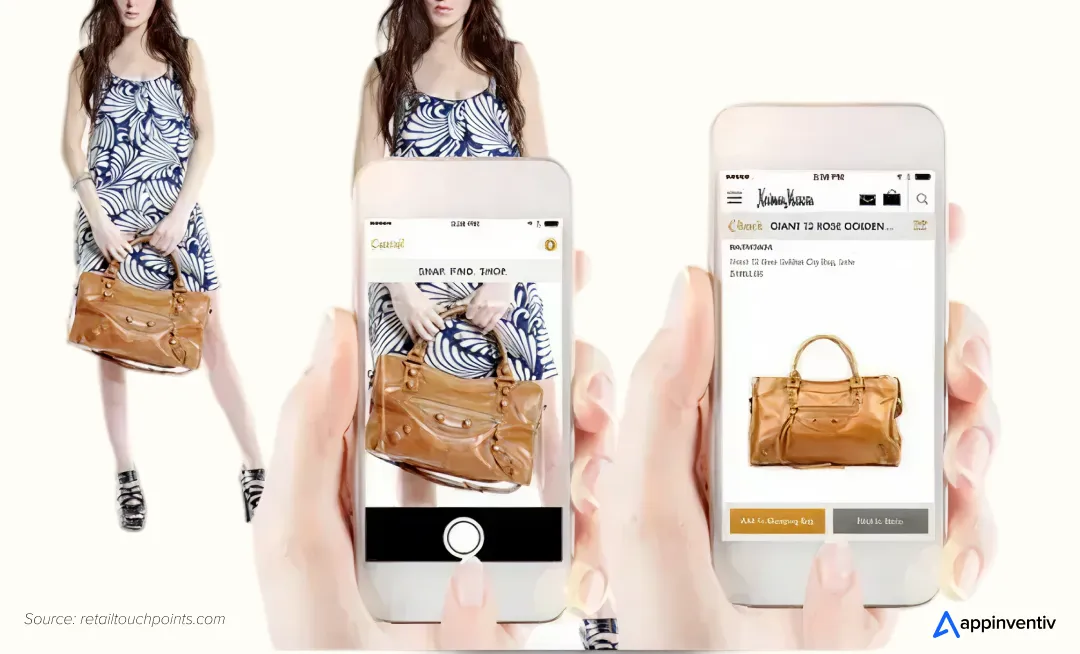
AI visual search has a direct, measurable impact on your most important metrics:
Higher Engagement Rates
Visual search is fun. It encourages browsing. When a user searches for one item, you can instantly show them a “Shop the Look” carousel or a “You Might Also Like” gallery of visually similar items. This keeps them in your app, dramatically increasing session duration and lowering bounce rates.
Lower Bounce Rates
This is the big one. You are shortening the path from “want” to “own.” By providing an instant, accurate match, you capture the customer’s intent at its absolute peak. You’re not giving them time to get frustrated, open a competitor’s app, or forget why they were shopping in the first place.
Reduced Return Rates
Returns are one of the biggest pain points for online retailers, especially in fashion, where fit and color is often misjudged. But AI visual search minimizes the risk of such misjudgements. It helps customers find exactly what they’re looking for, resulting in fewer returns and more sales.
Improved Cart Conversion Rates
The best AI visual search solutions for eCommerce don’t just find one item. They act as a personal stylist, which naturally increases the average order value. When users find exactly what they’re looking for, whether it’s an exact match or a similar product they didn’t know existed, they’re much more likely to make a purchase.
Just look at ASOS. Their “Style Match” feature is a masterclass in this. They knew their audience lived on social media. They gave them a tool to upload any screenshot or photo and immediately find a match on ASOS.
The results?
- Increased engagement
- Reduced bounce rates
- Improved conversion rates
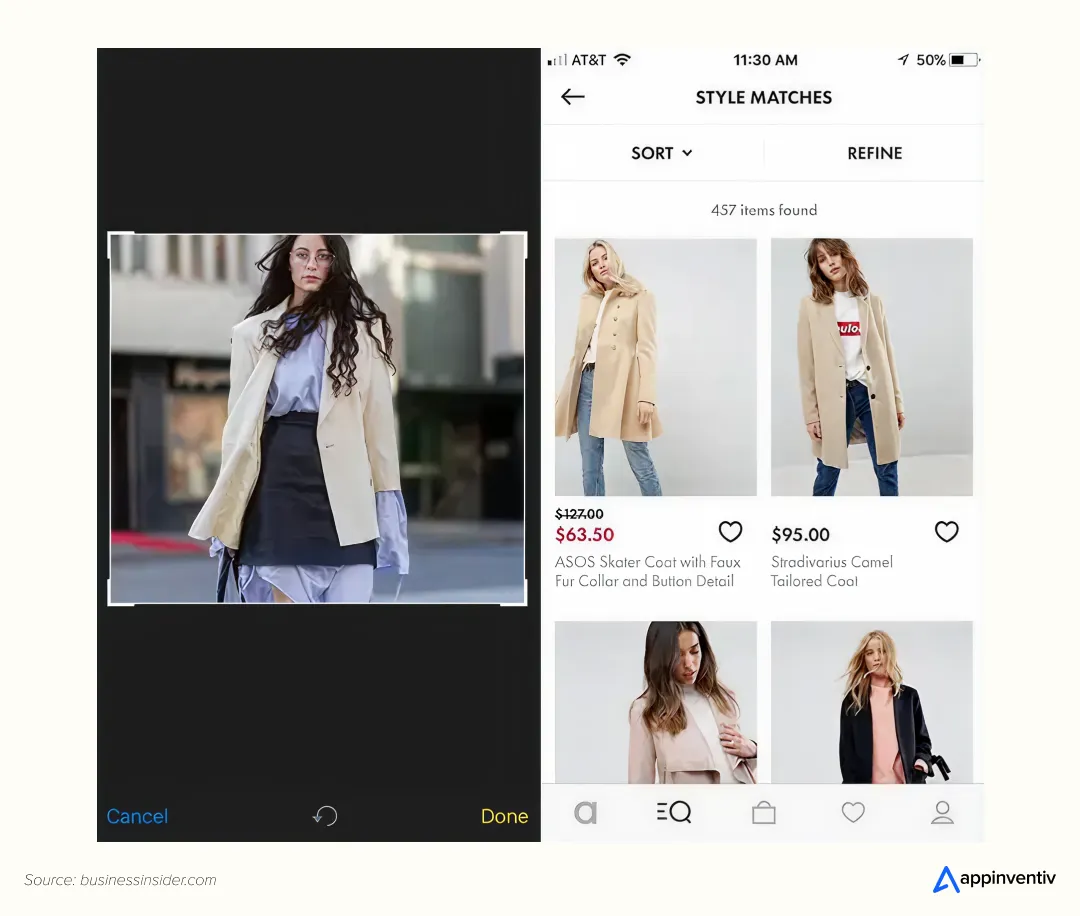
More Than Just Search: Key Use Cases of AI Visual Search in Retail & Fashion
If you think this technology just lives in the search bar, you’re missing half the picture. The same core AI engine can be deployed across your entire business; both for your customers and your own internal teams. Here are some of the most impactful use cases of visual search in eCommerce and fashion:

Visual Product Discovery
Visual search helps customers discover products using images and find exactly what they want without shifting through multiple pages of search results. This removes the need to type the keywords in the search bar.
For example, a customer uploads a photo of a dress they like, and AI will show them similar dresses in various colors, styles, and sizes. It’s a much more natural and effortless way to shop.
Retailers who implement this feature witness higher engagement, more sales and reduced return rates.
Personalized Recommendations
Once visual search identifies a product from a customer’s image, the AI system can recommend complementary items.
For example, if a shopper uploads a photo of a pair of boots, the system can suggest matching jackets, scarves, or bags. This enhances the likelihood of multiple purchases in a single transaction.
Personalized recommendations lead to a stronger connection between the retailer and the consumer.
Also read: AI Personalization in Consumer Experiences for Business Growth
Virtual Try-Ons
Virtual try-ons take visual search to the next level. The synergy of augmented reality (AR) and AI in visual search empowers customers to virtually try on anything; be it furniture, clothing, accessories, or even makeup.
For example, IKEA, the world’s leading furnishing brand, uses a virtual try-on feature to allow its users to visualize its range of furnishing items at their place before making a purchase.
This not only improves the overall shopping experience but also reduces the chances of returns due to wrong purchase.
Inventory Optimization
AI visual search applications in fashion and eCommerce are a game-changer for your in-store and warehouse teams. How? A sales associate finds a single shoe on the floor with no box or SKU. Instead of a 20-minute hunt, they snap a photo. The AI-powered visual product search instantly identifies the item, SKU, stock level, and where it’s supposed to be.
The AI system can analyze and classify products based on their visual characteristics, which reduces the time and effort required to maintain an up-to-date and accurate catalog. This is a massive operational efficiency.
For instance, Walmart uses visual search for inventory management to automate the tagging process for millions of products. This helps ensure that customers see the most accurate and up-to-date inventory information.
Trend Analysis
Fashion trends never stay stable. What is high in trend today can get obsolete tomorrow. The only way to keep pace with the changing fashion trends is to leverage the power of latest AI advancements.
Visual search technology in retail helps brands track trends in real-time by analyzing customer-uploaded images and social media posts. By processing and recognizing patterns in what consumers are sharing online, AI helps retailers identify emerging trends in fashion
This enables them to adjust their inventory and marketing strategies accordingly. As a result, brands can act quickly to respond to consumer demand, ensuring they are ready to offer what customers want.
Also check: 12+ Ways AI is Revolutionizing the Fashion Industry
Data-Driven Insights
Every interaction with your visual search platform provides valuable insights about customer behavior. What products are they searching for? What styles are they gravitating towards? AI collects this data and offers you a deeper understanding of consumer preferences.
Over time, these insights help you fine-tune your inventory and make more informed business decisions.
How Do You Actually Do This? A Step-by-Step Implementation Plan
You’ve got the “why” down; you understand the transformative potential of AI visual search for fashion and retail business. But now comes the more complex question: how do you implement it effectively?
Integrating AI eCommerce visual search solutions is no simple task. It requires a well-thought-out approach. But worry not. To help you sail smoothly in this complex venture, here is a six-step roadmap:
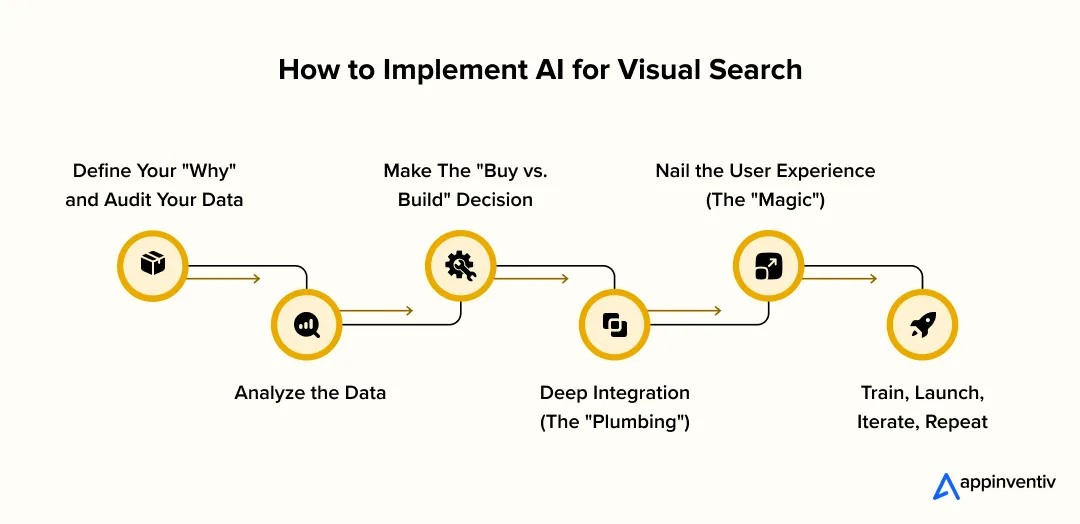
Define Your “Why” and Audit Your Data
Before diving into technical details, the first thing you need to do is define your primary goal. Ask yourself:
- Are you trying to solve the “I can’t describe it” problem in your search bar?
- Are you trying to power a “Shop the Look” feature?
- Are you trying to fix your internal inventory management?
Your primary goal will dictate the entire architecture and functionality of the AI visual search system.
Analyze the Data
The next step is to analyze your existing product data. Your AI model is only as effective as the data it has to work with. Ask yourself:
- Are your product photos high-resolution, multi-angle, and taken with clean backgrounds?
- Is your metadata accurate and properly formatted for AI to interpret?
If the answer is “no,” you’ll need to take a data-cleansing step to ensure your images and metadata meet the necessary standards before implementing AI.
Make The “Buy vs. Build” Decision
This is one of the most important decisions you need to make during the artificial intelligence visual search implementation process. Ponder over: do you need an off-the-shelf solution, or do you want to build something custom? Both options have their pros and cons.
Buy (SaaS/API Solution)
Here, you’ll integrate a pre-trained visual search API from a major cloud provider (e.g., Google Vision AI, AWS Rekognition) or a specialized retail AI vendor.
Pros:
- Faster Time to Market
- Lower Upfront Costs
Cons:
- Limited Customization
- Cost Scaling
Build (Custom Model)
For a truly tailored experience, you can build a proprietary deep learning model that is trained specifically on your product data.
Pros:
- Highly Customizable
- Ownable Asset
Cons:
- High Initial Investment
- Ongoing Maintenance
Our Recommendation? For 90% of retailers, a hybrid approach is best. You can start by integrating a best-in-class API to get you to market fast. Then, “fine-tune” that model with your own product data to make it smarter and more accurate for your specific catalog.
However, building a proprietary visual search model tailored to your catalog is also a good choice. Unlike pre-built solutions, this approach allows you to train the AI specifically for your products, ensuring the best possible results for your unique offerings.
Deep Integration (The “Plumbing”)
Now it’s time to get technical. This is the most critical stage where you integrate the AI visual search system into your eCommerce backend. This involves deep engineering to ensure everything runs smoothly and efficiently. This involves:
- Catalog Ingestion: Creating a data pipeline that “feeds” your entire product catalog (images and metadata) to the AI so it can be “indexed.”
- API Endpoints: Building the secure connection between your app/website and the AI. When a user uploads a photo, your app sends it to the AI, which sends back a list of product SKUs.
Related post: How AI API Integration Can Accelerate Your Digital Transformation
Nail the User Experience (The “Magic”)
Now, here’s where the magic happens. This is the part your customer actually sees. The most powerful AI in the world will fail if the UI is clunky. A poor user experience can lead to frustration, abandonment, and ultimately lost sales.
- Make it Obvious: The camera icon must be front-and-center in your search bar. Don’t hide it in a menu.
- Mobile-First Design: This feature is for mobile users. Design it for one-handed use.
- Show, Don’t Just Tell: When a user uploads a photo, give them tools to refine the image. Let them crop the image to focus on one item. When results appear, show a “visual similarity” score. Give them the “Shop the Look” and “Find Similar” buttons right there.
Train, Launch, Iterate, Repeat
AI is not a “set it and forget it” tool. It’s a living system. On day one, you launch with your best-trained model. From day two, you start collecting data. It simply means that your Visual AI for fashion and retail requires continuous improvement.
Collect These Data & Improve Your AI Model
- What are people searching for that you don’t have? (That’s a merchandising insight).
- Which results are they clicking on? (That’s a “thumbs up” to the AI).
- Where are they “bouncing”? (That’s a “thumbs down”).
Use these data to constantly re-train and fine-tune the model, making it smarter and more accurate with every single query.
Let’s plan your roll‑out with Appinventiv
Challenges in Implementing AI Powered Visual Search & How to Address Them
While AI visual search in fashion and retail offers numerous advantages to businesses in retail and eCommerce industries, its advantages are not without barriers. Thus, you must make proven strategies to overcome the potential hurdles. Here’s a breakdown of the most common obstacles and how you can address them.
Training AI with Diverse and Accurate Data
AI visual search is as effective as the data it’s trained on. It simply means that if your product images are of low quality, inconsistent or lack clarity, the results AI will produce will also be inaccurate.
Solution: To overcome this hurdle, you must collect ample high-quality product images. The more data you feed into the system, the more accurate the AI will become.
User Adoption and Engagement
No matter how good types of visual search technology for fashion and eCommerce you make, attracting users to it can be a real pain. Many shoppers who are comfortable with the traditional text-based search can’t get easily ready to make the switch to a new method.
Solution: Education is the right weapon to address this challenge. Thus, you should consider adding a small tutorial or pop-up on the homepage to help users understand its benefits. You can also make the visual search feature visible and easy to find on your website or app.
Managing Expectations
AI visual search is a powerful tool, but to ensure its success, you must set realistic expectations. AI isn’t perfect; it can misinterpret images or fail to find the exact match. This can lead to customer frustration if they don’t know that these limitations exist.
Solution: Be transparent about what the AI can do and where it might fall short. To address this issue, you can add a “Help” or FAQ section that outlines the expected behavior of the feature. Setting the right expectations from the start will prevent disappointment later.
Data Privacy and Security Concerns
Data privacy and security are the major concerns with the responsible use of AI visual search. When customers upload photos for visual search, they provide valuable personal data, including images that may identify them, their location, or even specific preferences. This can raise serious concerns related to data privacy regulations like GDPR and CCPA.
Solution: To address these concerns, you must have a clear data privacy policy in place. You can implement secure data storage and transfer protocols to ensure that images and personal data are handled safely and are encrypted during transmission.
The Cost of AI Visual Search Development for Retail and Fashion Industries
When it comes to developing AI visual search for retail or fashion, there’s no one-size-fits-all price tag. The cost can vary widely depending on several factors. This includes but is not limited to the scope of the project, the complexity of the AI model, and the expertise of your AI development services provider.
On average, the cost of AI visual search development for retail and fashion ranges from $40,000 to $400,000 or more.
If you build an enterprise-grade custom model and deeply integrate it into your backend, costs can go significantly higher as compared to MVP development.
Key budget drivers you should plan for:
- High‑quality image preparation and metadata tagging
- Integration and testing with your eCommerce platform
- Model training, tuning, and infrastructure costs
- Usage volume & performance requirements
- Ongoing operations: data pipeline, UX enhancements, model retraining
Estimated Cost Breakdown for AI Visual Search Development
| Project Scope | Cost Estimate | Details |
|---|---|---|
| Basic Cloud Integration | $40,000 – $80,000 | For implementing a pre‑trained API (e.g., Google Vision AI, AWS Rekognition) with minimal customization. |
| Custom AI Model (Small Retailer) | $80,000 – $150,000 | Custom model built for a smaller catalog (~10,000 SKUs), fine‑tuned to specific attributes. |
| Custom AI Model (Medium to Large Retailer) | $150,000 – $300,000+ | Large catalog (50,000+ SKUs), more complex features, full integration. |
| Enterprise‑Grade Visual Search Solution | $300,000 – $600,000+ | Tailored for global retailers, mission‑critical 24/7 operations, high volumes of queries, advanced analytics and custom models. |
| Ongoing Model Maintenance & Support | $4,000 – $10,000/month | Continuous model retraining, UX enhancements, data pipeline management, live support. |
Examples of Retail Giants Using AI Visual Search & Real World Results
AI visual search in retail and fashion has already proven its impact in the real world. Many leading brands across have widely adopted this technology and are reaping the rewards. Here are the examples of some leading names in the retail and fashion industries that have used AI visual search solutions and witnessed measurable results.

H&M (The Omnichannel Giant)
H&M uses visual search in their app to bridge the gap between physical and digital stores. You can scan an item’s tag in-store to see it online, find other sizes/colors, or see how to style it. It’s a perfect in-store visual search application.
IKEA (The Home Goods Innovator)
IKEA’s “Place” app is pure genius. It combines AI visual search with AR. You don’t just find the sofa you’re looking for; you see it in your living room to scale. This single-handedly solves the biggest customer anxiety in furniture shopping (“Will this fit?”).
Pinterest (The Discovery Engine)
Pinterest is a visual search company. Their “Lens” tool lets you point your camera at anything in the real world and get related “Pins.” This was their pivot from a simple “mood board” site to a powerful eCommerce discovery platform.
Amazon (The G.O.A.T.)
Amazon’s “StyleSnap” feature allows users to upload a photo of a look they love, and Amazon’s AI deconstructs it, finding every piece (the jacket, the shirt, the jeans, the shoes) and offering similar, shoppable items from its massive marketplace.
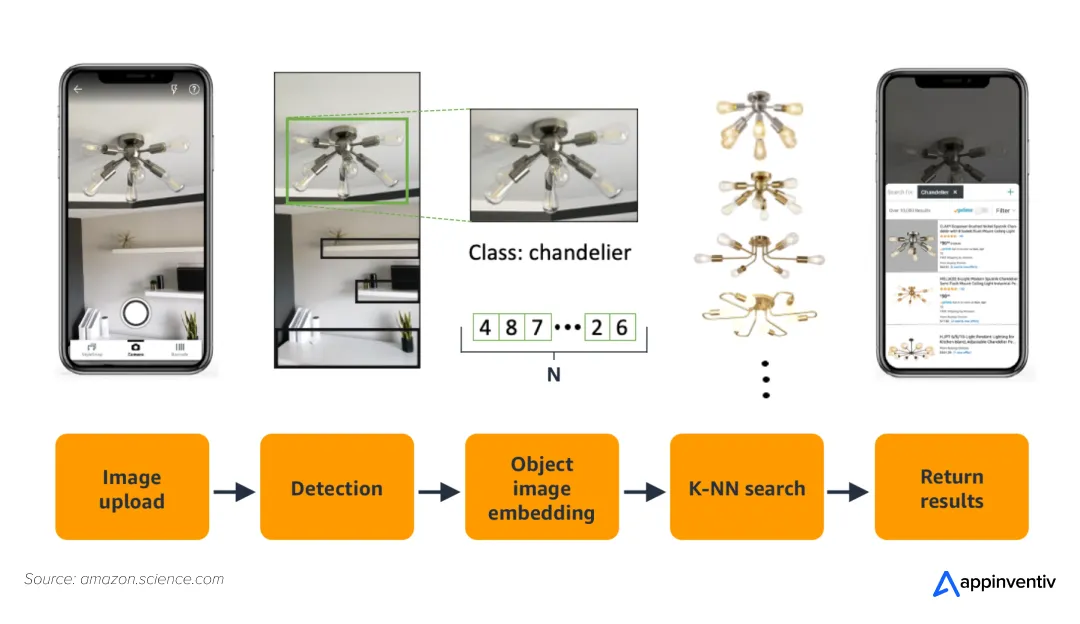
Appinventiv’s Expertise: How We’ve Put This into Practice
Client’s Challenge: We partnered with a major US-based home decor retailer who was facing a common situation: high traffic, but low conversion. Their customers couldn’t find what they wanted. They’d type “blue lamp,” get 500 results, and leave.
Our Solution: We deployed a hybrid AI visual search solution. We integrated a powerful baseline AI system, and fine-tuned it to the retailer’s specific catalog of 50,000+ SKUs. The focus was on distinguishing nuanced product attributes such as finish (brushed-nickel vs. chrome) and style (art-deco vs. industrial).
The Results?
- 20% increase in conversion rates
- 35% reduction in bounce rate
- 50% faster product discovery
- 25% boost in average order value
- 30% increase in repeat visits
The Future of AI Visual Search is Multimodal: Trends and Predictions
What we’ve discussed is what’s possible today. But as an innovation leader, you need to know what’s coming next. The future trends in visual search technology are all about blending AI models. Here are some emerging AI trends that will make visual search technology in retail and fashion more prevalent and powerful.
Integration with Generative AI
The implementation of Gen AI in this aspect is the most exciting.
- Today: You uploaded a photo of a jacket, we found the jacket.
- Tomorrow: You upload a photo of a jacket. A Generative AI (like the models behind ChatGPT or Gemini) instantly creates three complete, shoppable outfits around it, tailored to your known style, and writes a style-guide description for each.
Voice + Visual Synergy
The search bar is going to disappear in the coming years. Your customer will hold up their phone, point it at a dress, and say: “Show me this in red and for under $100.” And within moments, AI will deliver a perfect result.
Hyper-Personalization with AI Visual Search
The future of visual search isn’t only about finding similar products; it’s about hyper-personalization too. Of course, AI visual search will understand the visual preferences of users, but along with it, AI will also analyze their shopping history, search patterns, material preferences and emotional responses to products.
This will help retailers offer products that customers can truly connect with, resulting in improved conversion rates and a better shopping experience.
Visual Search in Augmented Reality (AR) and In-Store Applications
As AR technology improves, AI visual search will increasingly be used in physical stores. Shoppers will be able to scan products with their phones or in-store kiosks and instantly see detailed information, product availability, or suggestions for similar items online. In-store visual search will enhance the virtual try-ons and omnichannel shopping experience.
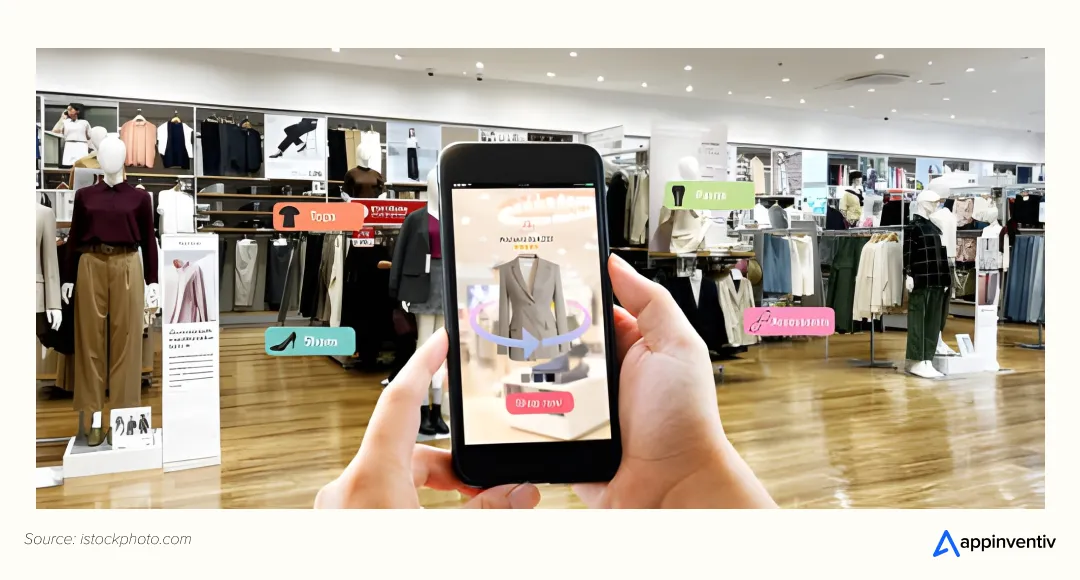
The Retail Revolution is Visual, Ace it with Appinventiv
The future of retail is visual, and AI visual search is leading the way. Adopting this transforming technology early will help you enjoy several perks like faster product discovery, higher conversion rates, lower bounce rates and more personalized shopping experiences and so on.
But how will you implement it in your business? Bother not. You don’t have to do it alone. Our team of 1600+ tech experts, including 200+ AI engineers is here to help.
In our 10+ years of industry experience, we have successfully delivered over 3000+ projects, including 300+ AI-powered solutions across 35+ industries. We’ve helped leading global brands like IKEA, Adidas, Edamama, and 6th Street to optimize their digital experiences. Here are some of our retail clients.
If you are still unsure about our AI capabilities, here are some facts and figures, presenting the stark reality of Appinventiv’s AI excellence:
Why Choose Appinventiv for Your AI Visual Search Needs?
- Proven Expertise in AI: We’ve delivered 150+ custom AI models that are 98% accurate in predictions. Our experience ensures your AI visual search solution is both powerful and precise.
- Measurable Business Outcome: The AI solutions we have built for our clients help them achieve 40% reduction in costs and enable 75% faster decision-making.
- Faster Time-to-Market: With our AI development services, you can reduce your time-to-market by 10x. This ensures your business stays agile and responsive to the latest trends.
Our Recognitions and Awards: Our expertise in app and AI development has been recognized by many esteemed organizations such as:
- Deloitte Fast 50: Featured for two consecutive years in recognition of our exponential growth in India.
- APAC High-Growth Companies: Ranked by Statista and FT for two consecutive years as one of the high-growth companies in the Asia-Pacific region.
- Economic Times’ AI Leader: Awarded by Economic Times in 2025 for being the leader in AI Product Engineering & Digital Transformation.
Take the Next Step with Appinventiv
Our AI expertise is proven, and our industry recognition speaks for itself. If you’re ready to take the leap into the future of retail, we’re ready to help you make it happen. Partner with us now and leverage the power of AI visual search in retail and fashion today.
FAQs
Q. How is AI visual search transforming the retail and fashion industries?
A. This is how AI visual search is transforming the retail and fashion industries:
It’s completely changing discovery. Instead of you hoping a customer types the right keywords, they can now use an image (a photo, a screenshot) as their search query.
It removes friction. It connects the “inspiration” (seeing a style on Instagram) to the “purchase” (finding it in your store) in seconds.
Q. What are the business benefits of implementing AI visual search?
A. The main benefits of AI visual search in retail and fashion are a direct hit to your bottom line:
- Higher Conversion Rates: You’re matching user intent perfectly, leading to more “add to carts.”
- Increased Average Order Value (AOV): You can use it to power “Shop the Look” and “Find Similar” features, cross-selling and up-selling effectively.
- Better Customer Loyalty: A “magical” and smart app experience keeps users from going to competitors.
- Fewer Returns: Customers buy what they mean to buy, reducing “not as expected” returns.
Q. How does AI visual search improve customer experience in eCommerce?
A. It makes shopping feel personal and effortless. No more guessing keywords. If they see it, they can buy it. It’s especially powerful on mobile, where typing is a pain. It’s the difference between a frustrating 10-minute search and an exciting 10-second discovery.
Q. What is the cost of developing an AI visual search solution for retail?
A. The cost of AI visual search development for retail varies widely. It’s not one-size-fits-all.
- SaaS/API Route: This is the most cost-effective start. You pay a cloud vendor (like Google or a specialized AI company) based on your usage. It’s a lower upfront cost and is great for validating the ROI.
- Custom Build Route: This is a larger investment, as you’re building a proprietary AI model from scratch. It’s more expensive but gives you a 100% custom, ownable asset.
On average, the cost to build AI powered visual search ranges between $40,000 and $400,000 or more.
Q. How can Appinventiv help retailers adopt AI visual search technology
A. We’re your end-to-end partner. We don’t just write code; we start with your business goals.
- Strategy: We help you decide on the right “Buy vs. Build” approach.
- Data Prep: We can even use AI to help clean up and tag your existing product catalog.
- Integration: We do the heavy engineering to “plug” the AI into your current eCommerce platform.
- UX Design: We design the in-app experience to be intuitive and drive adoption.
- Iteration: We help you use the data from day one to make the AI smarter.
Q. What are the best examples of AI visual search in fashion and retail?
A. The “gold standards” to look at are:
- ASOS (Style Match): Lets you upload any screenshot to find similar clothes.
- IKEA (Place): Uses AI + AR to put virtual furniture in your room.
- Pinterest (Lens): Turns your phone camera into a search engine for the real world.
- Amazon (StyleSnap): Deconstructs entire outfits from a photo into shoppable items.
Q. What are some most common types of visual search in retail and fashion?
A. Here are the main types of visual search:
- Image-based Visual Search
- Barcode or QR Code-based Visual Search
- Augmented Reality (AR) Visual Search
- Text-to-Image Search
- Video-based Visual Search
- Multimodal Search (Text + Image)
- In-store Visual Search


- In just 2 mins you will get a response
- Your idea is 100% protected by our Non Disclosure Agreement.

13 Ways Generative AI is Transforming the Hospitality Industry
Key takeaways: The most mature applications of Generative AI for hospitality are in guest service, revenue management, marketing, and operations automation. Real value comes from integrating generative AI into hospitality operations and existing PMS, CRS, CRM, and POS systems, rather than using stand-alone tools. Successful programs treat Generative AI in hospitality as a product, incorporating…
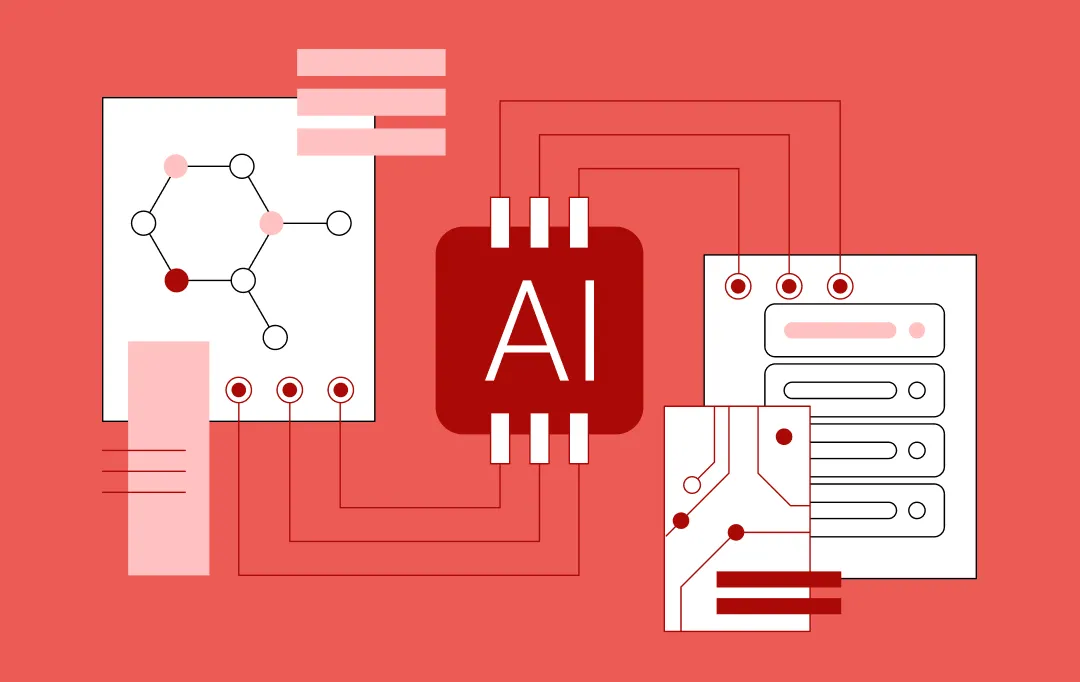
Scaling AI Initiatives: Why MLOps Matters More Than DevOps
Key takeaways: DevOps runs systems. MLOps keeps decisions accurate. MLOps vs DevOps is a leadership choice, not a technical one. Scaling AI without MLOps only scales risk. MLOps turns AI into infrastructure, not experiments. Operational maturity beats model sophistication. Real advantage comes from mastering DevOps and machine learning together. Most leadership teams don’t fail at…
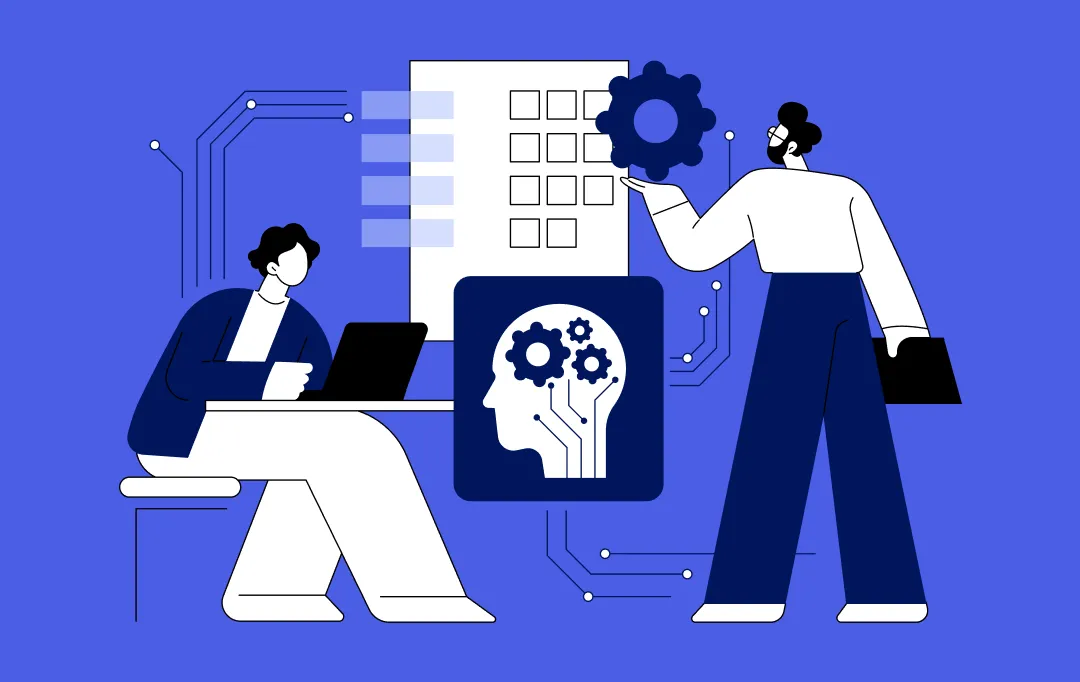
Melbourne's AI Reality Check: 13 Industries That Chose Evolution
Key takeaways: 68% of Australian companies already use AI. Early adopters gain 12-18 months of competitive advantage before AI becomes a baseline expectation 48% see positive returns within year one. Average returns hit 3.5X, with top performers reaching 8X. Basic automation pays off in 3-6 months Winners treat AI as a business transformation, not tech…
